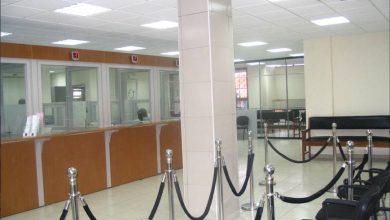Why public debt should worry every patriotic Malawian
Reading between the lines, the sentiments separately expressed by the International Monetary Fund (IMF) and the World Bank in the past 30 days show that Malawi’s public debt situation is not good.
This time around, the twin Bretton Woods institutions did not mince words. They bluntly stated that the debt levels are not sustainable and this should be a cause of concern for every patriotic Malawian.

In a statement summarising discussions with the Malawi Government on the new Extended Credit Facility (ECF), the IMF team mentioned the need to urgently address debt sustainability as one of the key conditions towards granting the new programme widely expected to address balance of payment problems rocking the economy.
Three weeks after the IMF stated its position, World Bank Malawi country manager Hugh Riddell, during the launch of the 15th Malawi Economic Monitor, said the state of debt has reached unsustainable levels. He warned that Malawi risked losing external debt opportunities unless it swiftly undertakes debt management, sustainability and transparency to avoid losing credit-worthiness.
Unsustainable public debt level means that, if left unchecked, costs a country the trust of external lenders who may have to “think twice” before lending.
Debt is deemed unsustainable where, among others, a country struggles to service it and, in Malawi’s case, the situation is complicated by huge budget deficits. Not an enviable situation for one to be in, let alone a country.
Why is Malawi in the situation it is today? This is the question every patriot should be asking. Well, my quick response is that the conduct of the Malawi Government over the years has thrown the country into this mess. To finance the luxurious lifestyles of the ruling elites and their cronies, Treasury has been forced into heavy borrowing from both the domestic market and external sources.
Truth be told, borrowing itself is not bad as long as it is for ventures that will add value such as boosting production. Borrowing is also reasonable if the loan can be settled within an agreed timeframe without driving the borrower into liquidation.
But when the room to manouvre gets narrower, squeezing the borrower into a tight corner, borrowing as a solution becomes no longer sustainable as no lender will be willing to lend a country that will struggle to pay back.
What is more worrying and I must say embarrassing for Malawi is that in 2006 the country had 90 percent of its $3 billion external debt written off by international lenders under the Highly Indebted Poor Countries Initiative (Hipc).
Fast-forward to 16 years after Hipc debt relief, Malawi’s total public debt is at around K5.8 trillion, an equivalent of about 55 percent of the country’s total worth or gross domestic product (GDP). This is not sustainable.
In his 35-page maiden State of the Nation Address (Sona) delivered in Parliament on September 4 2020, President Lazarus Chakwera expressed worry that within a year the country’s debt rose by a whopping K450 billion.
That time he was barely four months in office, but two years down the road, the debt has soared further under his watch.
At that time, the President indicated that interest charges for the debt were around 36.6 percent of GDP. To paint a vivid picture of the debt situation, he said: “In other words, for every K100 we generate [as a country], K36.60 is used to pay interest on the debt that we have accumulated, excluding repayment of actual loan.”
Why are we borrowing more? This is yet another question demanding honest answers to avoid the risk of mortgaging this country and its people to shylocks who will one day demand their pound of flesh from our great-grandchildren.
Public finance management as well as debt management and sustainability should be a lifestyle. It should not be done to “impress” the IMF, the World Bank or other development partners.
The IMF Executive Board is expected to meet in mid-July to decide on whether Malawi should get a new ECF. Before that, there was some homework authorities needed to work on to get the “signalling effect” for direct budget support.
The IMF injection may be around $300 million while other partners such as the European Union may pump in another $200 million or so. It may not be enough to address all of Malawi’s problems, but will somehow stabilise things.



One Comment